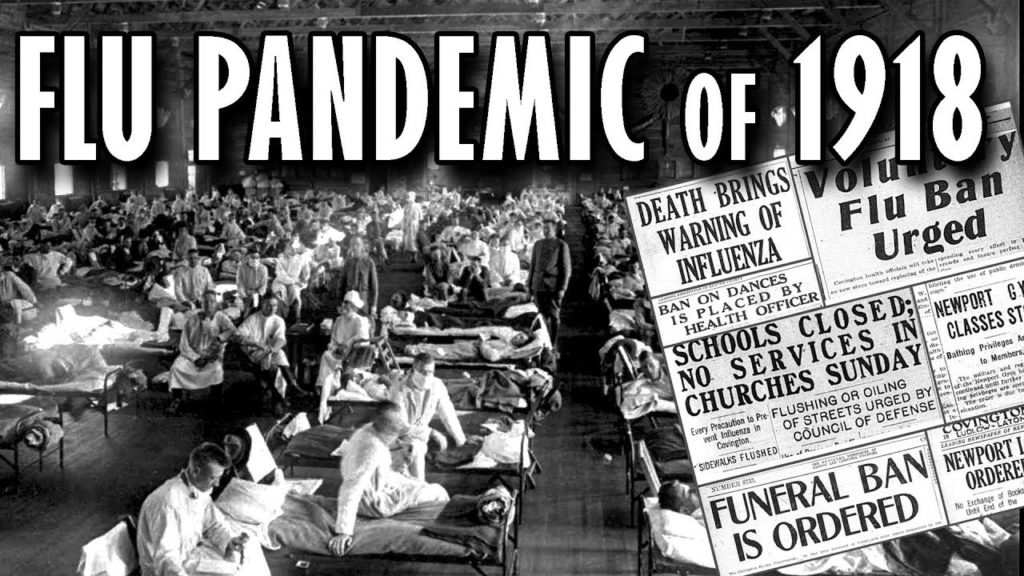Scientists Proved Viruses Are Not Contagious in 1918
As documented by Arthur Firstenberg, a researcher, consultant and lecturer on the health and environmental effects of electromagnetic radiation with 40 years of experience, the only experiments attempting to prove viruses are contagious were carried out in the 1918 flu pandemic and these experiments failed 100% of the time.
The details can be found in The State of Science, Microbiology and Vaccines Circa 1918 by John M Eyler PhD:
https://www.ncbi.nlm.nih.gov/pmc/articles/PMC2862332/
Moreover, the results of the experiments proved beyond doubt that viruses are so NOT contagious that they cannot be transferred from one human body to another, even if blood, snot from a flu-ridden nose and thick phlegm from the sufferer’s throat are consumed by the recipient in large amounts.
The experiments also showed that vaccines do nothing good whatsoever.
The State of Science, Microbiology and Vaccines
In the well referenced and peer reviewed paper, it is stated as follows [with spacing added to assist the reader]:
Perhaps the most interesting epidemiological studies conducted during the 1918–1919 pandemic were the human experiments conducted by the Public Health Service and the U.S. Navy under the supervision of Milton Rosenau on Gallops Island, the quarantine station in Boston Harbor, and on Angel Island, its counterpart in San Francisco.
The experiment began with 100 volunteers from the Navy who had no history of influenza. Rosenau was the first to report on the experiments conducted at Gallops Island in November and December 1918.
His first volunteers received first one strain and then several strains of Pfeiffer’s bacillus by spray and swab into their noses and throats and then into their eyes. When that procedure failed to produce disease, others were inoculated with mixtures of other organisms isolated from the throats and noses of influenza patients.
Next, some volunteers received injections of blood from influenza patients. Finally, 13 of the volunteers were taken into an influenza ward and exposed to 10 influenza patients each. Each volunteer was to shake hands with each patient, to talk with him at close range, and to permit him to cough directly into his face.
None of the volunteers in these experiments developed influenza. Rosenau was clearly puzzled, and he cautioned against drawing conclusions from negative results. He ended his article in JAMA with a telling acknowledgement:
“We entered the outbreak with a notion that we knew the cause of the disease and were quite sure we knew how it was transmitted from person to person. Perhaps, if we have learned anything, it is that we are not quite sure what we know about the disease.” (p. 313)
The research conducted at Angel Island and that continued in early 1919 in Boston broadened this research by inoculating with the Mathers streptococcus and by including a search for filter-passing agents, but it produced similar negative results.
It seemed that what was acknowledged to be one of the most contagious of communicable diseases could not be transferred under experimental conditions.
Vaccine Controversy & Standards For Vaccine Trials
As was the case with Pfeiffer’s bacillus vaccines, most of the early reports on the use of these mixed vaccines indicated they were effective. Readers of American medical journals in 1918 and for much of 1919 were thus faced with the strange circumstance that all vaccines, regardless of their composition, their mode of administration, or the circumstances in which they were tested, were held to prevent influenza or influenzal pneumonia. Something was clearly wrong.
The medical profession had at the time no consensus on what constituted a valid vaccine trial, and it could not determine whether these vaccines did any good at all. The lack of agreed-upon standards was exacerbated by the informal editorial procedures and the absence of peer review in scientific publication in 1918.
During the pandemic of 1918–1919, the profession was forced to develop standards for vaccine trials.53 Park and George McCoy, director of the Hygienic Laboratory of the Public Health Service, led the assault pointing out the fallacies in design or inference of current reports.
Most trials began after the first cases of influenza had appeared locally, often after the epidemic peak had passed, and hence the most susceptible may already have been attacked and could not appear in the vaccinated group, and the more resistant were likely to be assigned to the vaccinated group.
Little effort was usually made to minimize selection bias in assignments to experimental or control arms or to match each group by age, sex, and exposure. And too many trials operated with poor observation and imperfect data collection.54,55 (p. 103)
McCoy arranged his own trial of the Rosenow vaccine produced by the Laboratories of the Chicago Health Department. He and his associates worked in a mental asylum in California where they could keep all subjects under close observation.
They immunized alternate patients younger than age 41 on every ward, completing the last immunization 11 days before the local outbreak began. Under these more controlled conditions, Rosenow’s vaccine offered no protection whatsoever. McCoy’s article appeared as a one-column report in the December 14, 1918, edition of the Journal of the American Medical Association (JAMA).56
At the meeting of the American Public Health Association (APHA) later that month, McCoy and Park used their positions on the Executive Sub-committee on the Bacteriology of the 1918 Epidemic of Influenza to issue a manifesto that appeared in APHA’s “Working Program against Influenza.”57 APHA declared that because the cause of influenza was unknown, there was no logical basis for a vaccine to prevent the disease.
There was a logical basis for believing that a vaccine to prevent the secondary infections might be developed, but there was no evidence that any of the vaccines currently available were effective. The association then specified the criteria that a trial must meet, if its conclusions were to be valid.
There must be a control group, the association specified, and the vaccinated and the control group must be equal in size. The relative susceptibilities of the two groups must be equivalent as determined by age, sex, and prior exposure. Their degree of exposure must be of equal duration and intensity, and should take place during the same phase of the epidemic.57 (p. 3)
The Pandemic & Biomedical Knowledge
While the experience of the great pandemic of 1918–1919 had given American medical researchers a heightened appreciation of the dangers of pandemic influenza, and while it permitted epidemiologists to enlarge the fund of descriptive information on influenza outbreaks, it had done little to unlock the mysteries of the disease. If anything, the experience of 1918–1919 served to deconstruct existing biomedical knowledge.
This void in fundamental knowledge would not be filled soon. When Jordan published his massive, 500-page authoritative synthesis of the influenza literature in 1927, the most basic and fundamental features of influenza were still unexplained. Jordan told his readers that influenza could only be defined by its pattern of occurrence—its epidemiology. Its cause was unknown, and its pathology was indefinite.
It was uncertain whether there was acquired immunity for influenza, and, if there was, how long it lasted. Why pandemics occurred when they did and why they spared some places were also unknown. It was also uncertain whether the disease called influenza that occurred every year in sporadic cases and small outbreaks was the same disease that circulated in the pandemics. He continued the practice of distinguishing “influenza” from “epidemic influenza.”73
Jordan did suggest that changes in virulence of the still unknown agent of influenza might be important and that this agent might be filterable, but in 1927 these were still speculations for which there was no direct evidence. In short, the three decades that had passed since Leichtenstern published his major synthesis had seen remarkably little addition to the fund of basic scientific knowledge of influenza, in spite of concerted efforts by researchers employing the best available research tools.
Conclusion





